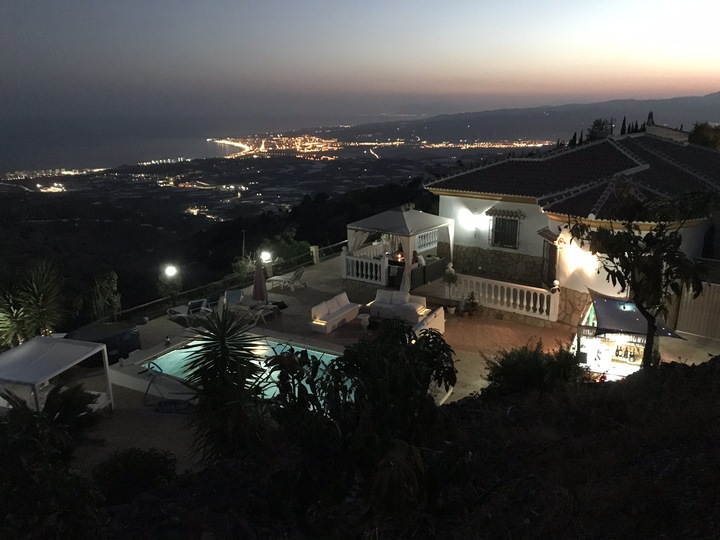Campo? Before we moved to the Campo region, I researched the area online. Many people wrote about “living in the Campo”. Campo, I thought, is a village. But on Google Maps, I could not find any village called Campo. Weird! Where is Campo, I wondered.
The day we moved we arrived via the motorway A7.
The A7 – called ‘Autovía del Mediterráneo’ – runs from the French border to Algeciras in the far south. With 1.300 kilometers, it is the longest motorway in Europe. Interesting, isn’t it? The longest motorway in Germany is 962 kilometers long. UK’s M6 is 380 Kilometer
But back to the Spanish A7. Driving on this motorway is relaxed driving with magnificent views of the sparkling blue Mediterranean Sea on one side, and a magnificent mountain landscape on the other side of the Autovia. Look at the mountains. Speckled with countless white dots. Houses. Villas. Spread all over the mountain slopes. I hadn’t seen that in such a large number before.
This is called Campo.
Spanish country life.
Living in nature. The nearest neighbor a few (kilo-) meters away.
The townhall – Ayuntamiento – is responsible for all Campo permits, and to develop new plots of land. It is reported that more than one mayor issued very generous permits, and then ended in prison. Corruption? Let’s not go there.
Living on the Campo means freedom. Independence. Views. Incredible views. In clear weather you can see over to Africa. If you ask an estate agent ‘if he or she has any houses with a view in the portfolio’, he or she will look at you completely confused. ‘There are no houses on the Campo WITHOUT a view.’ Ok, got it.
Checking prices. Rent or buy?
A rustic stone house? Or a Pool Villa? All is available. A modern Campo-Villa with pool is available for less then Euro 1000 for long-term rental, with an annual rental contract. High season prices and short-term rental are much higher. Old Spanish buildings with thick walls and small windows are much cheaper – you pay more for modern villas with pool, using the latest technology and double glazing windows. All is available. Whether a purchase makes sense is up to everyone to decide for themselves. Should the EURO collapse and the old Spanish currency ‘Peseta’ is introduced again, a real estate collapse is likely. Speculation. But who knows what will happen.
Living on the Campo also means no rubbish collection. No postmen. No deliveries. Not even WhatsApp location works. Directions for new visitors often read: ‘Follow a rubble road for 2.6 kilometers until you come to a tree, then turn right…. etc.’. This does not always work in the first attempt, in which case the phone will ring: “Help! We are lost!”.
Paths are only partially paved. Often bumpy, without hard shoulders. Single-lanes. If a car comes towards you, one has to reverse. A 4×4 off-road vehicle is recommended, you should ignore scratches caused by bushes on the side of the road. Not to mention the dust. A Campo car is always dusty, inside and outside. This also helps identify tourists: clean cars without scratches.
Not everyone likes Campo living. It’s too quiet for young people, as they are stuck without a car. For the elderly it could be scary being away from a doctor or hospital. This brings us back to the generation 50+. Either you love Campo, or hate Campo. You decide.


I love campo ! and have a very dusty car inside and out lol 🙂